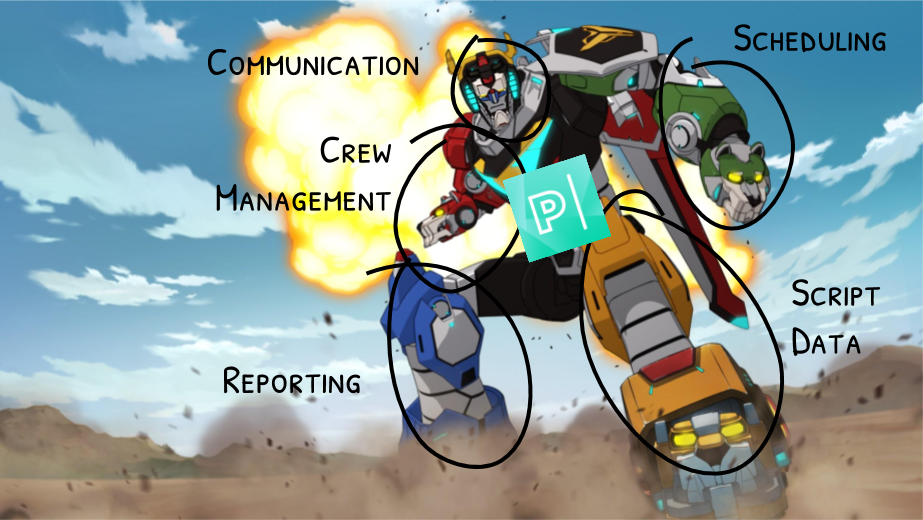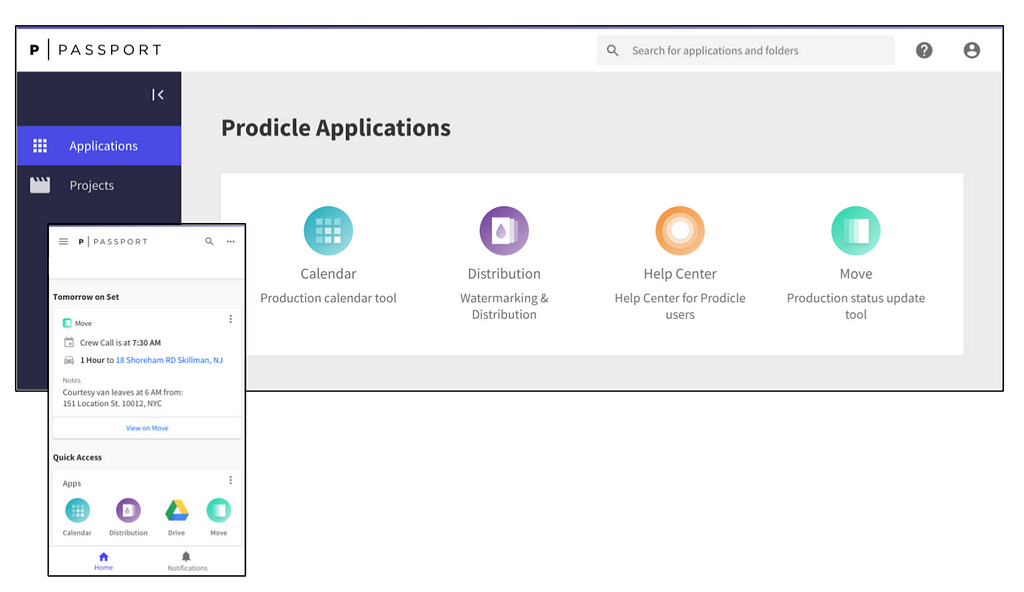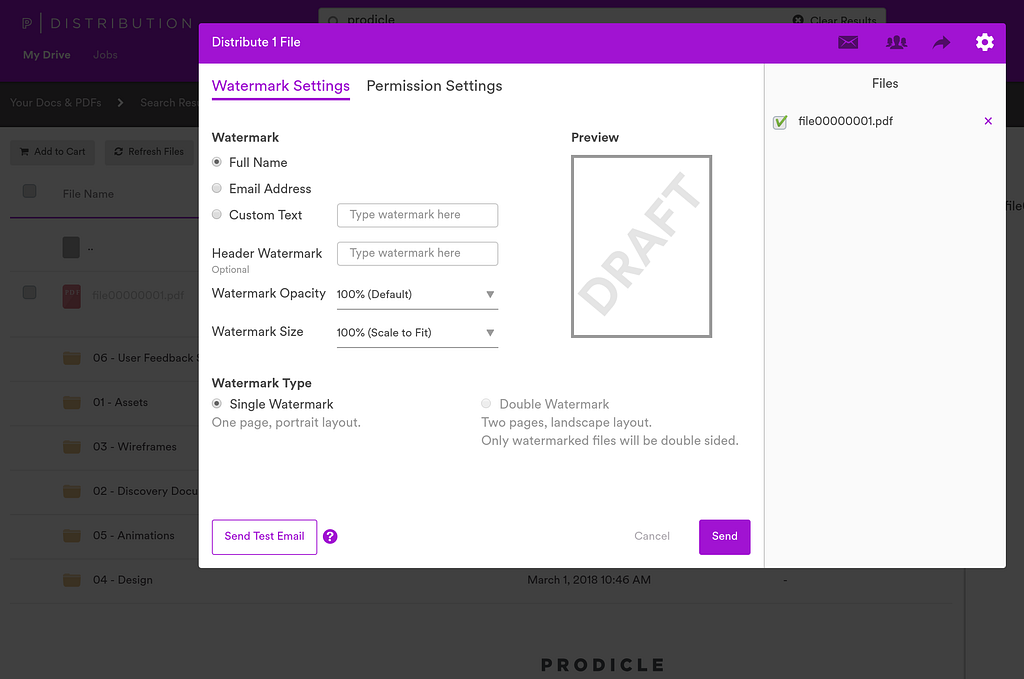by Chris Goss
Change management is hard. In everyday production, there are numerous factors working against embracing change. Limited preparation time, whole new show = whole new crew, innumerable planning variables, and the challenge of driving an operational plan based on creative instincts. These are problems that technology is not yet built to solve. Time, training, and education can and will make a dent in our efforts, but creative planning is nuanced, and by nature, human.
So, where do we start? What can production management technology do now to pave the way for future change? Having spent the past two years building Prodicle, our production suite of apps, we hit several pockets of success, while learning from numerous obstacles. Others have ventured down this path as well, and there are several start-ups and moderate size companies that reach out to us about their product offerings. It’s exciting to see others with the same level of passion and enthusiasm we have for improving the way entertainment gets made. After many meetings, memos, pitches and 30-day trials, there are a number of trends we often find ourselves discussing with all production SaaS providers and we think it’s worthwhile to share these key development pillars to start an ongoing conversation about how we’re thinking of pursuing these problems. Some have manifested themselves in how we’ve built Prodicle, others are ideas and pipedreams we hope to pursue in time. If you’re a SaaS provider seeking to dig your heels into the entertainment production space, here are some common themes we often discuss with our partners, our crews and our software development teams.
Modularity is key.
We built Prodicle with the intention of being modular, which is critical based on the wide variety and volume of content we produce. We are not a domestic TV studio. We are a global streaming studio, which means we need to produce entertainment that satisfies the different tastes of our members all over the world. Live action films, multi-camera comedies, weekly talk shows, global competitions, international crime dramas, documentaries about the Rajneesh — all forms of content for all audiences. This means that one giant monolithic software solution will not work — build, buy or otherwise. We are often pitched the dreamstate of software: one end-to-end solution to rule them all. While all-in ecosystems may work for smaller studios/production companies, the variables across our content slate makes it very difficult to successfully operationalize. As such, our offering will always be a modular ecosystem of connected solutions, some things built by us, other things bought from vendors, and a whole bunch of stuff in between. The beauty is twofold — products that work great on their own, products that work better together. It’s like Voltron. Season 7 now streaming.

It’s perfectly fine for a singular solution to solve one problem really well — in fact, this is often preferred. If your solution seeks to do seven things, chances are we’ve already solved for five of them — we just need the remaining two. Those two become the attractive secret sauce, and if they play well in a modular sandbox, we want to hear more! But when they don’t, and we have to go all-in on multiple ecosystems that overlap in functionality, the pain of deployment and support makes it a near non-starter. Passport is Prodicle’s menu-based portal that brings multiple solutions together in one place. It’s where we seek to grow our product offering for our crews. One modular location, many products.

Identity is complex.
It’s important to have safeguards in place to protect our content. Filmmaking is collaborative and lots of people touch the final product. Safely getting in and out of our ecosystem is important to get right. If too complex, it becomes a barrier to change management and introduces less-than-ideal workarounds. If too liberal, then we face the possibility of content leaking early. It’s an exercise in balance. Where do we start? From the product/user perspective, we need one login. We cannot have a multitude of solutions all utilizing different usernames and passwords. Retail has got this figured out, the freelance work environment needs to solve it as well. If your product doesn’t offer SSO (single sign-on) it becomes an immediate point of resistance. SSO is crucial to making security as transparent to the user as possible. Second? Roles and permissions. Our Content Engineering team has built an internal solution to manage app-to-app roles and permissions in a single administrative portal. This means we can provision users across multiple apps in one location. We’d love the ability to call your APIs and set application roles individually and in-bulk from one place. It’s a user administrator’s dream. Working with tens of thousands of freelancers around the world mandates this as a requirement. SSO and APIs for roles/permissions is a biggie.
Collaboration is key.
Netflix adopted Google Cloud’s G Suite in 2013. This means our entire corporate file sharing platform is Google Drive. Thousands of users, millions of files within the cloud — accessible everywhere. When we started the studio, we were faced with a choice: a) deviate and use a different file sharing platform, perhaps different platforms for different types of content, or b) use G Suite on our productions so corporate, studio and production are all in one shared space. This was a tough call, as the variables within our content, as noted above, are extensive. However, we felt G Suite was and is flexible enough while subscribing to our core principles of modularity. Utilizing their service within our ecosystem was the fastest way to stand-up a global file sharing platform. We have hundreds of productions using the tools within G Suite, collaborating with our studio users. Instead of trying to build our own file platform, or buying a multitude of third party platforms, we started building production-centric features on top of G Suite. For dynamic watermarking, password protection and expiring links, we built Prodicle Distribution. It sits on top of Google Drive, taking advantage of the multitude of G Suite functions that would be silly for us to build ourselves, e.g. collaboration, commenting, file previews, etc. In doing this, utilizing consumer facing tech from companies whose full-time focus is workplace solutions (our main focus is great content), we’re able to leverage what works well and add what we need to that. We don’t expect consumer tech companies to build production functionality, but if we can leverage what they do well and we build what we need for us to do well (produce great content) it gives us a significant head start. We look for this in third-party production tools all the time. Again, we want production components that don’t exist anywhere else, not another folder-based file repository to store our scripts.

Data as operational currency.
There are groups, committees, and conferences where universal data IDs are endlessly discussed. While not impossible, the effort needed for unification is tremendous. Data reconciliation will be an ongoing challenge especially when data accessibility isn’t solved. As such, availability of production and studio generated data is a must-have. The production-to-studio relationship requires the real time transfer of assets and data. When data is locked behind a proprietary file format or within data architecture with no accessible APIs, the constraints significantly reduce the data’s usefulness. Studios are hampered by the time it takes for software companies to develop their UIs. This significantly limits the software’s functionality and reduces its value at the studio level. Investing in software is a dual focus: accessibility of the data and assets generated by the software and the operational efficiencies provided by the use of the software. Both needs have to be serviced as production and studio each have different data and operational needs. However, this raises a subsequent problem of…
Serving two masters.
Most third-party production software offerings service singular needs. The products are either loved by productions and disliked by studios, or loved by studios and disliked by productions. This is a real challenge because the benefit is in the marriage of the two. But as a SaaS provider, how do you prioritize user needs? By listening to the producer, the studio exec, the production assistant? We seek to answer this question, but it’s not easy practice. Most of the solutions lie within the above — separating the data from the UX. A production UX has to be attractive to a production user — someone singularly focused on executing his/her job for one production. A studio UX is macro, servicing the needs of a multitude of productions each with their own unique variances. Does this equate to doubling the investment? Perhaps from a UX perspective, but less so from a data perspective — that is, if the data is easily accessible. If a studio can centralize pertinent micro-level and macro-level data, the UX can be agnostic — built by us or built elsewhere. This is where third-party offerings can be very attractive: solutions that offer unique operational advantages in a killer UX with data and assets that are easily accessible at the studio level for macro-level needs.
Change is bigger than Netflix.
Our entire industry is on the precipice of embracing new technologies all in pursuit of providing the best tools to our productions with the goal of empowering them to focus on what matters most — creating great stories. There are significant opportunities to partner on solving operational challenges, and there are a lot of them. We seek to utilize modern technology to solve these problems by building support for a Netflix platform that can be used on any Netflix production. That platform is modular — one to utilize an agnostic offering of SaaS products, built by us, built by others. Ideally, industry-wide discussions on normalizing the data models would be ideal. Perhaps, one stop at a time. We work to solve the gaps that no studio has yet to solve, giving our creators the advantage of cutting-edge production management software. Through this line of thinking, we want to leverage what exists to move fast in solving areas that do not yet exist. But it’s a paradigm shift — both in how the collective industry builds and how our users adopt. We are still in our infancy, having barely scratched the surface and there’s still so much to be done. It’s an exciting time to be one-part entertainment and one-part tech. For more information on this initiative, check out the Netflix media blog here.
Netflix’s Production Technology = Voltron was originally published in Netflix TechBlog on Medium, where people are continuing the conversation by highlighting and responding to this story.